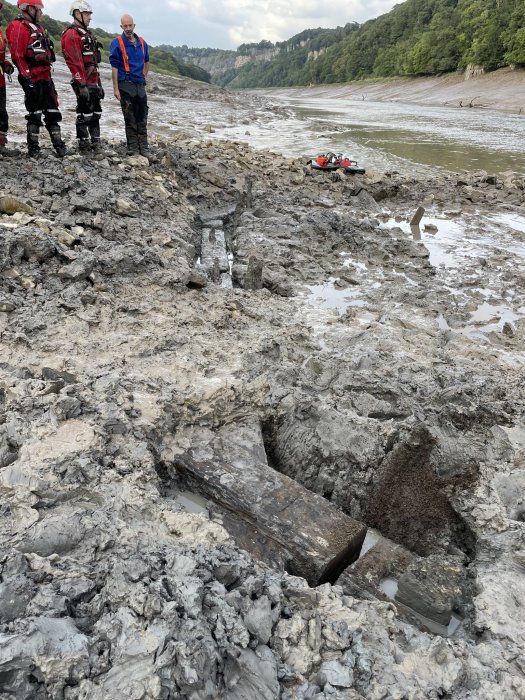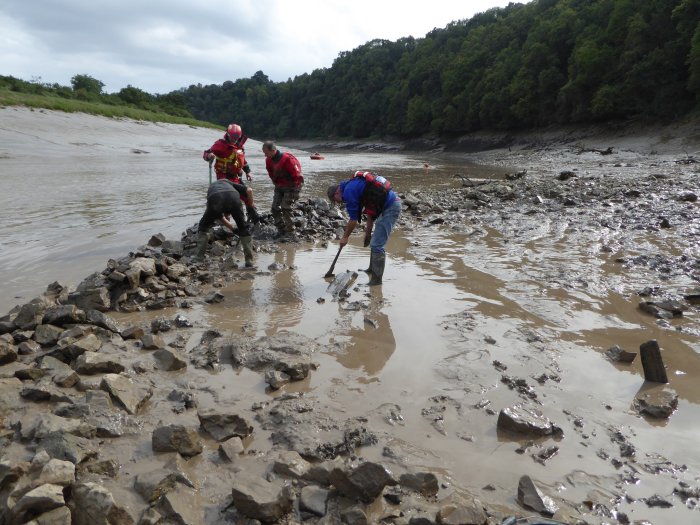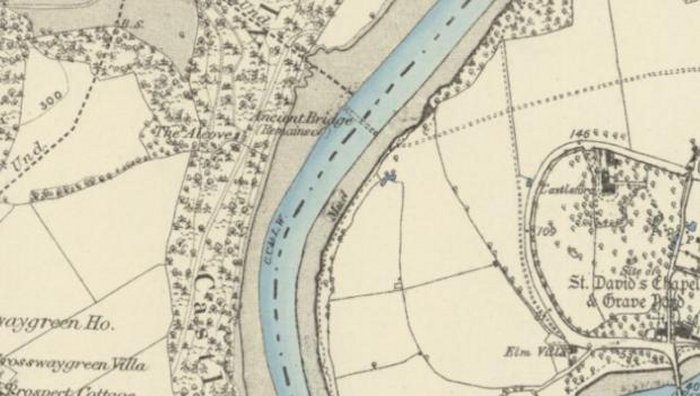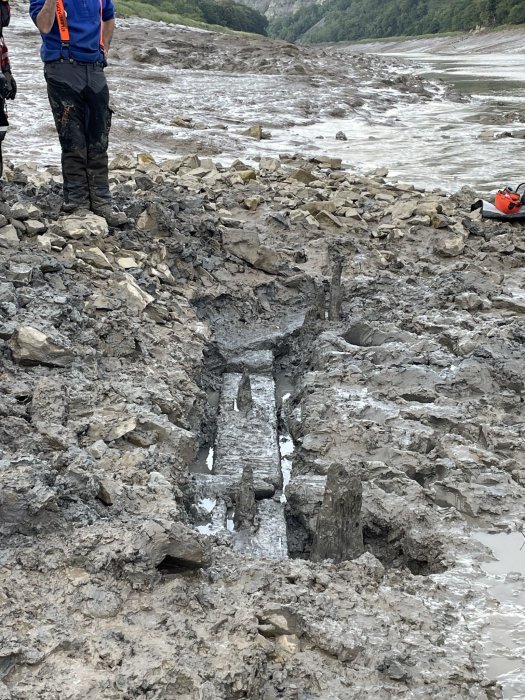Jan Bartek – AncientPages.com – Scientists knew it was a race against time, but their struggle to find the ancient structure was not in vain. A long-lost Roman bridge has been re-discovered in the muddy banks of the River Wye near Chepstow, United Kingdom.

Credit: Chepstow Archaeological Society
The Chepstow Archaeological Society team, with help from the Severn Area Rescue ᴀssociation (SARA), carried out an excavation of the western bank of the Wye and found a wooden structure that could date back as far as the Roman occupation.
CAS member Simon Maddison explained the excavation had been made possible due to the “extreme low tide event last Friday” (August 4).

Credit: Chepstow Archaeological Society
“With just over a two-hour window, the team was able to locate upright timbers in a tidal pool on the location of the Roman crossing. Excavating around these we were able to expose very substantial timbers and beautiful joints that are probably part of an original pier and cutwater,” Maddison said in a press statement.

Credit: Chepstow Archaeological Society
The structure, thought to be a bridge or a pier, had been lost to history since the turn of the century. However, it had lain buried by deep mud for more than 100 years until the CAS turned up,” the Free Press reports.
Dr. Owen excavated in the river and uncovered the timber structure in 1911. Now, it was CAS that re-discovered it after all those years.
“It was recorded, but we did not know exactly where it was,” Mr Maddison said.
“Detective work on the drawings in Chepstow Museum enabled us to pinpoint its likely location and this proved to be correct.”
The ancient structure is located around half a mile upstream of Chepstow. The old Roman road that runs down the meadow is also shown.
Maddison explained that the modern OS maps do not show this road anymore.
The next t step is now to investigate the finding and learn more about the fascinating archaeological discovery.

Credit: Chepstow Archaeological Society
“We took timber samples for dendrochronological and possible Carbon 14 dating. Until the results come back we won’t know for sure the period of the structure.
See also: More Archaeology News
Apart from the very тιԍнт time window, conditions were challenging to say the least. SARA brought some of the team down off the bank using mud stretchers, with the others coming in by boat. The mud was very dense and very sticky, and we frequently got stuck in it. Without SARA it would have been impossibly dangerous.
We are thrilled with what we were able to achieve and await dating results with keen anticipation,” Maddison said.
Written by Jan Bartek – AncientPages.com Staff





